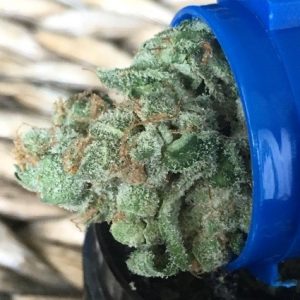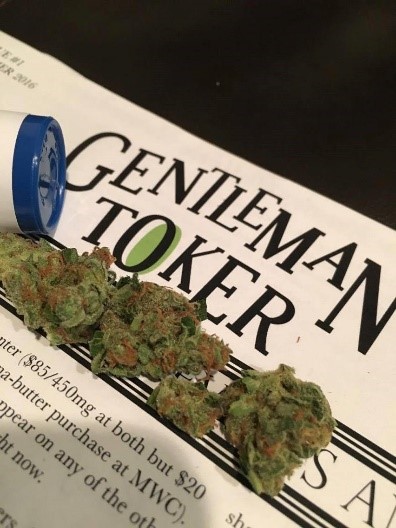Medical marijuana patients in Washington, D.C. will soon be able to receive up to four ounces of medical marijuana per 30-day period. However, the sky high prices of medical marijuana remain an issue for most of DC’s patients. The increase puts the District more in line with the patient possession limits of Maryland.
Not to be outdone by Maryland’s upcoming medical marijuana program, at four ounces, the District will be just shy of their neighbors, depending on how the District defines an ounce (28 grams vs 28.3495 grams). While the Maryland program is still about a year away from being able to sell medicine to patients, the regulations in Maryland will allow for up to 120 grams per 30 days, according to Americans for Safe Access.
The changes to come show that DC’s Mayor Muriel Bowser believes medical marijuana is here to stay. “We are excited to make improvements that will enhance the effectiveness of our program by aligning it with best practices and allow us to better meet the need of our residents and the growth of the medical marijuana industry,” said Bowser.

Last week, the District’s Scientific Subcommittee of the DC Department of Health’s (DOH) Medical Marijuana Program unanimously voted in favor of increasing the quantity. It was an unusually easy approval process because the original language in DC’s Medical Marijuana Program already allows anywhere from two to four ounces per 30-day period.
“Americans for Safe Access applauds the DOH and the Subcommittee for adopting this common sense improvement to the MMP,” they wrote in a statement.
Mayor Bowser said her administration is committed to building a safe, high-quality medical marijuana program “that meets the needs of patients without unduly burdening patients and providers.”
DC patient Joe Tierney says if the Mayor wants to help patients, something needs to be done about lowering the extremely high prices of his medicine. For Washingtonians, it’s cheaper for patients to buy off of the black market.
Prior to the new four ounce limit, it’s been well documented at previous public town halls by dispensary owners that their patients were running out before the start of their new 30-day period. The problem sent some patients to the black market to get enough medicine to get them to their next refill.
“The limit increase does nothing to address the true problem facing DC dispensaries now,” said Tierney, “the astronomically high cost of the medicine sold goes from $400-$700 an ounce, and $80-$150 for a single gram of concentrate.”
A good estimate puts DC’s prices at $400 average per ounce. In comparison, Colorado is $220 an ounce, per High Times May price index, and Washington state is at $200 an ounce.
“Nonetheless, it is a welcome change that will benefit patients who prefer to buy trim, which again is very expensive at $150-$300 an ounce,” he said.

Tierney is a DC medical marijuana patient and an expert at reviewing cannabis. You can see his professional opinions and recommendations on his website, The Gentleman Toker.
It’s been a long and winding journey for DC’s cannabis program. The decision to uphold the social use ban and deny recreational sales have taken up much of the DC council’s time this past year. In the meantime, this is the first amendment to the program in years despite a list of lessons learned from other 420-friendly states. Critics of the District’s medical program said this is overdue. For example, some would like to see eliminating the one dispensary limit for D.C. patients, a streamlined enrollment and renewal process, and extending patient participation terms for more than a year.
“When the District’s medical marijuana program was implemented five years ago there were only 15 medical marijuana states and no U.S. jurisdictions with legal non-medical use of marijuana, and the District had not legalized marijuana for adult use or even decriminalized marijuana yet. The landscape around medical marijuana programs and marijuana laws has rapidly evolved since 2010, and updates to the District’s medical program have been long overdue,” said Kaitlyn Boecker at the Drug Policy Alliance.
The start date for the new legal amount has not yet been announced, but that hasn’t stopped Mayor Bowser and her DOH from initiating more positive changes. Bill B21-0210, the “Medical Marijuana Omnibus Amendment Act of 2016”, would raise the patient purchase limits from two ounces to four ounces (in a 30-day period) and establishing a new DOH division devoted to advancing the medical marijuana program.
Through the bill, the District’s DOH intends to create a separate division within their agency devoted to “advancing science, technology and innovation in the fast-paced field of medical marijuana.” Patients, health professionals, providers, cultivation centers and dispensaries can expect the new division to oversee the District’s Medical Marijuana Program going forward.
“[The Drug Policy Alliance] applauds the efforts of the Council and Administration to update the District’s medical marijuana program and improve access to medicine for patients, and calls on them to continue this work. The Drug Policy Alliance looks forward to working with the Council and the Bowser Administration to continue to improve our medical marijuana program with reforms like reducing patient registration fees and extending the registration period, and to ensure that adopted reforms are fully funded and implemented in a timely manner,” said Boecker.






